Marine construction is extremely challenging, requiring very different equipment and techniques than land based systems. The marine environment is fraught with risks – everything from permitting to weather becomes that much more challenging. Thatcher provides construction/rehabilitation of cellular cofferdams, dock walls, revetments, breakwaters, jetties, and other shore protection, timber or synthetic fendering systems, and some dredging. Thatcher installs marine piling, marine sheet piling, and more. Whether working from land or by barge, we have the experience and equipment to handle difficult jobs in difficult weather. We have a variety of marine equipment and experience to tackle these problems. With our truckable barges, we can put a 150 ton crane on a golf course pond.

Cellular cofferdams are essentially gravity structures that are formed by interlocking flat pan sheet piles into an enclosed shape, and then backfilling the inside – putting the interlocks in tension. Cells can act individually or can be linked together to form walls. A variation of this is known as the modified diaphragm which does not close on the land side. Each arc section returns with straight walls in tension.
Thatcher has installed miles of cellular cofferdams over the years, and recently installed a modified diaphragm wall in Peoria, IL.
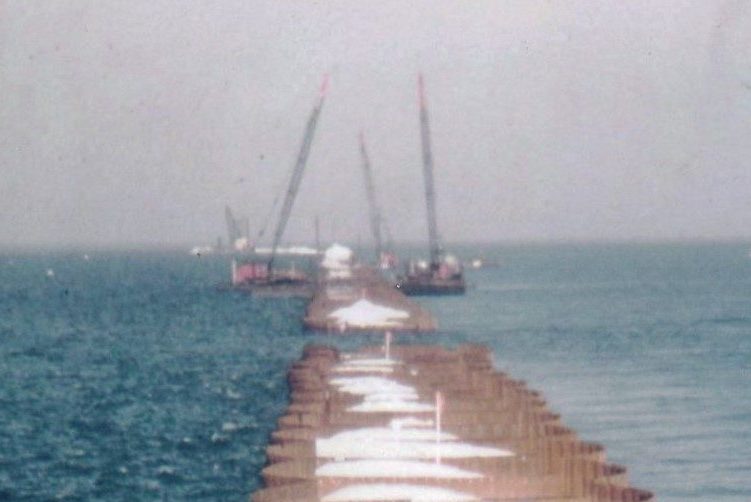


Thatcher has the most expertise and experience in the area for building or repairing dock walls along the rivers and in the ports. Our design build capabilities can save a tremendous amount of time and money if we are hired directly at the beginning of a project. To handle the increased challenges of the permitting process it’s best to start early on the dock wall, even if the development behind the wall still has many unanswered questions.

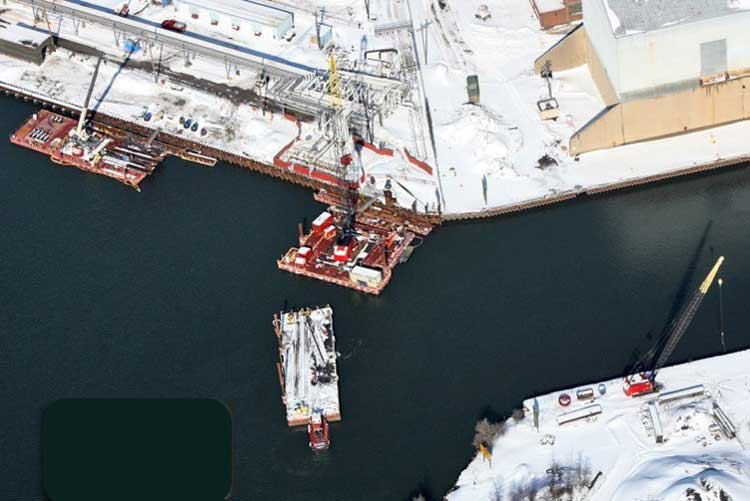
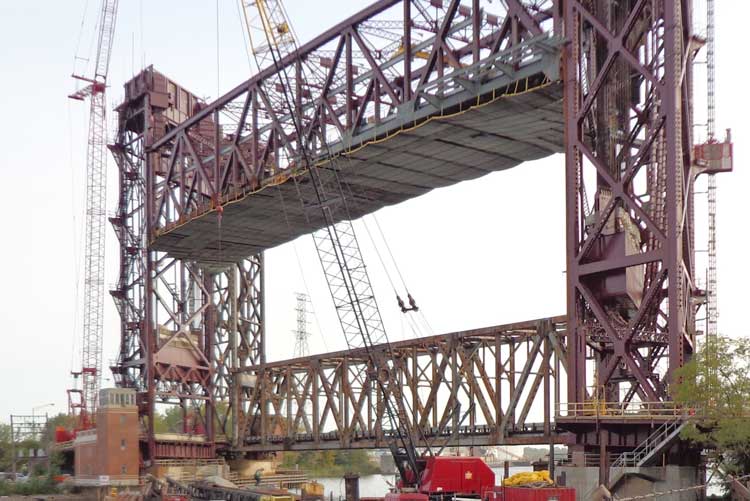
While Thatcher is not a bridge builder, we have performed many jobs in support of bridge building activities. We have installed all types of dolphins to protect bridges, from wood pile and pipe pile clusters to large diameter single pipes. During the North Avenue bridge construction, we installed pipe pile piers with lattice structure to support the temporary bridge that was used to keep North Avenue open during the construction of the permanent bridge.
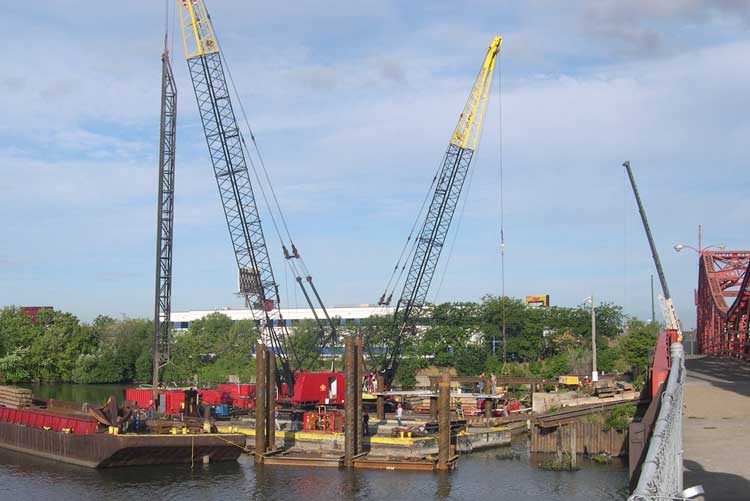


A breakwater structure is designed to absorb the energy of the waves that hit it, either by using mass (e.g. Chicago’s stone-filled timber cribs) or by using a revetment slope (e.g., with rock or concrete armor units). Breakwaters reduce the intensity of wave action in inshore waters and thereby provide safe harborage. Breakwaters may also be small structures designed to protect a gently sloping beach to reduce coastal erosion.
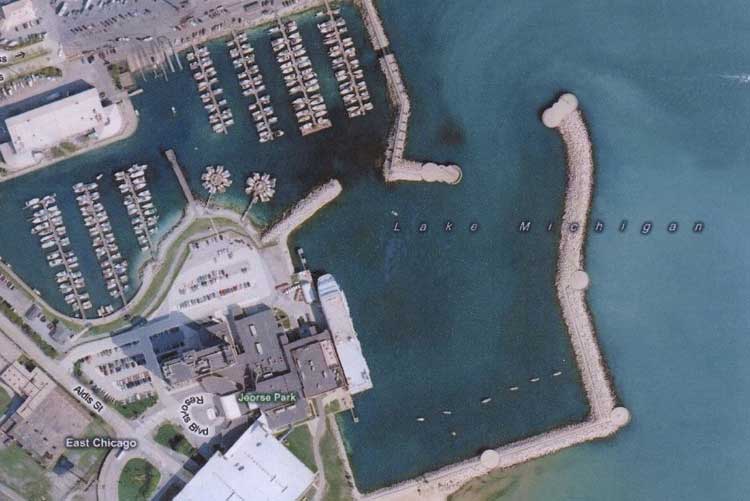

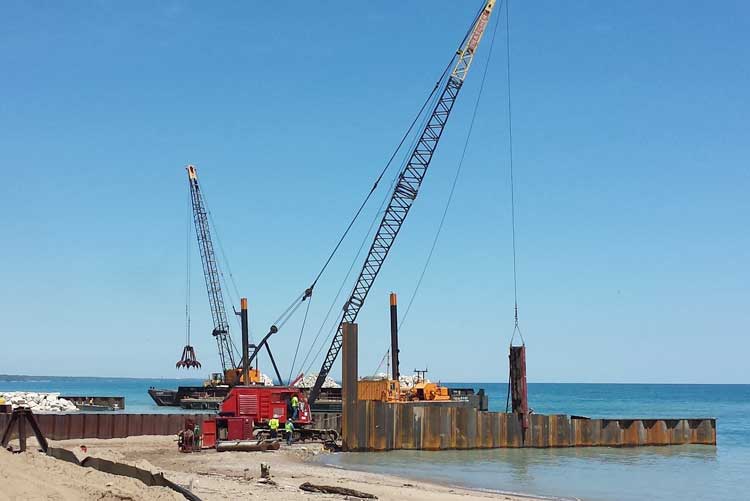
Jetties and groins are structures that project from land out into water, roughly perpendicular to the shoreline. A jetty is a type of breakwater constructed to protect the entrance to a harbor. Groins are built out from a shoreline in order to collect littoral drift to form a beach or preserve a beach.
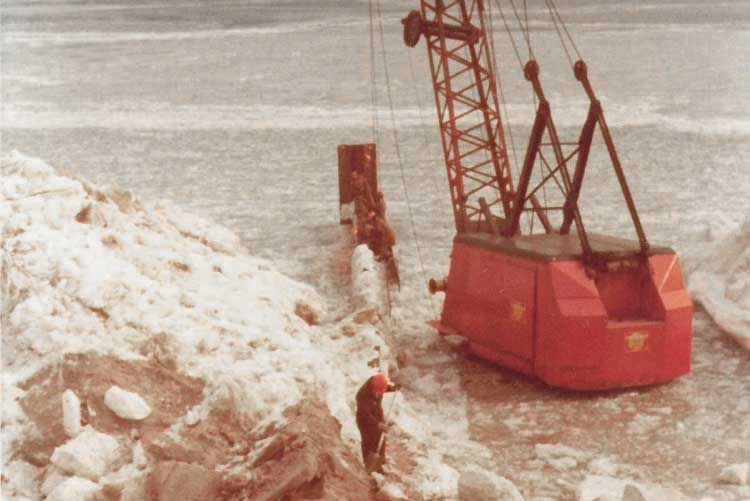
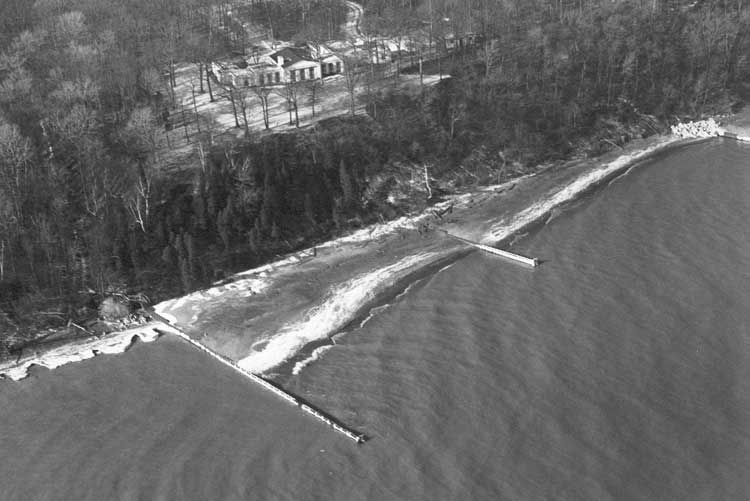
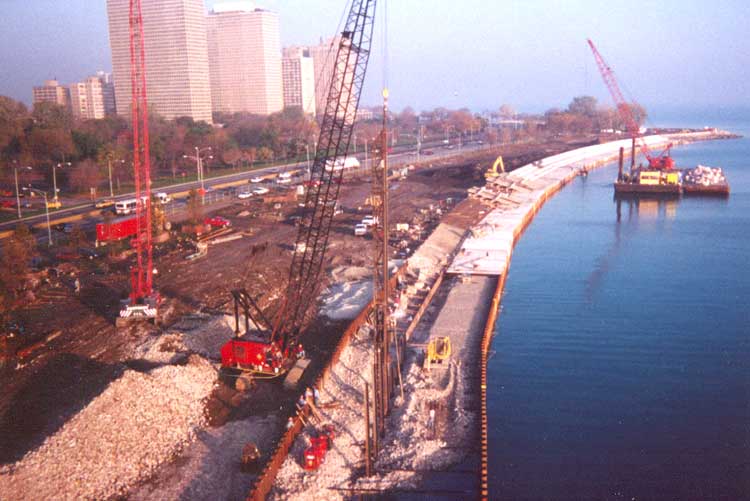
Shore protection is used to retain or rebuild natural systems (beaches, dunes, cliffs, and wetlands) or to protect man’s structures. Shore protection will reduce storm damage and mitigate coastal erosion.
A revetment is a passive sloping structure, which protects against erosion caused by wave action, storm surge and currents. It is placed on banks or cliffs in such a way as to absorb the energy of incoming waves. All types of revetments have the inherent function of reducing beach degradation as they are used at locations where the coast is exposed to erosion. A revetment will fix the location of the coastline, but it will not arrest the ongoing erosion in the coastal profile, and the beach in front of the revetment can gradually disappear.

